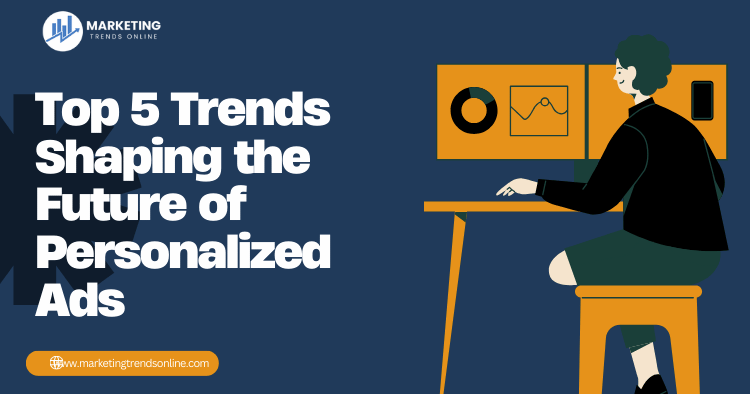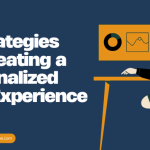Table of Contents
- Introduction
- 1. AI and Machine Learning Revolutionizing Personalization
- 2. The Rise of Privacy-First Marketing
- 3. Omnichannel Experiences
- 4. Dynamic Creative Optimization
- 5. Voice and Visual Search Integration
- Conclusion
- FAQs
Introduction
In the ever-evolving digital landscape, personalized advertising has become a cornerstone of effective marketing strategies. As consumer expectations shift, advertisers are tasked with crafting messages that resonate on an individual level. In this article, we will explore five key trends that are shaping the future of personalized ads, ensuring that brands can connect with their audiences in meaningful ways.
“Personalization isn’t just a trend; it’s a fundamental shift in how brands communicate with consumers.”
1. AI and Machine Learning Revolutionizing Personalization
Artificial Intelligence (AI) and machine learning are transforming the way brands understand and engage with consumers. By analyzing vast amounts of data, these technologies can identify patterns and preferences, allowing for hyper-targeted ads that speak directly to the individual.
How It Works
- Data Collection: AI algorithms gather data from various sources, including browsing history, social media activity, and purchase behavior.
- Predictive Analytics: Machine learning models leverage this data to predict future behavior, enabling brands to serve relevant ads at the right moment.
Benefits
- Increased Engagement: Personalized ads result in higher click-through rates (CTR) and conversions.
- Cost Efficiency: Businesses can optimize ad spend by targeting specific audience segments.
“Imagine a world where every ad you see is tailored just for you—that’s the power of AI in advertising.”
For further insights into how AI is transforming marketing, explore 10 ways AI is transforming marketing.
2. The Rise of Privacy-First Marketing
With growing concerns over data privacy, consumers are becoming more cautious about how their information is used. This trend has prompted brands to adopt a privacy-first approach, ensuring transparency and trust.
Key Strategies
- Opt-In Models: Brands are increasingly relying on opt-in consent, allowing users to choose what data they share.
- Data Minimization: Companies are collecting only the data necessary for personalized advertising, reducing the risk of breaches.
Impact on Advertising
- Building Trust: A privacy-first approach can enhance brand loyalty and improve customer relationships.
- Regulatory Compliance: Adhering to regulations like GDPR and CCPA is crucial for avoiding hefty fines.
“In a world where data breaches make headlines, trust is the new currency in marketing.”
For more insights on data privacy trends, check out top data privacy trends shaping marketing 2024.
3. Omnichannel Experiences
Consumers interact with brands across multiple platforms, and delivering a seamless omnichannel experience is vital for effective personalized advertising.
What is Omnichannel?
Omnichannel marketing ensures that a brand’s messaging is consistent and cohesive across all channels, including websites, social media, email, and in-store experiences.
How to Achieve It
- Unified Customer Profiles: Brands should create comprehensive customer profiles that aggregate data from all touchpoints.
- Cross-Platform Campaigns: Develop campaigns that can transition smoothly from one channel to another, such as a social media ad leading to a personalized email follow-up.
Advantages
- Enhanced Customer Journey: A seamless experience improves customer satisfaction and increases the likelihood of conversions.
- Increased Brand Recognition: Consistent messaging reinforces brand identity and fosters loyalty.
“Think of omnichannel as a symphony—every channel should play in harmony to create a beautiful customer experience.”
For more on creating omnichannel experiences, explore the insights in 10 game-changing trends in personalized email marketing 2024.
4. Dynamic Creative Optimization
Dynamic Creative Optimization (DCO) is a technology that enables advertisers to personalize ad creatives in real-time based on user data and context.
How DCO Works
- Real-Time Adaptation: DCO uses algorithms to swap out elements of an ad (like images, text, or offers) to match the viewer’s preferences and current context.
- A/B Testing and Learning: Continuous testing allows brands to identify which variations perform best and optimize accordingly.
Benefits of DCO
- Higher Relevance: Ads that adapt to individual preferences lead to increased engagement.
- Improved ROI: Brands see better returns on investment as ads resonate more with their target audience.
“DCO is like having a personal stylist for your ads—always adapting to fit the viewer’s taste.”
For further information about DCO, you can visit top 10 content marketing tools to boost strategy 2024.
5. Voice and Visual Search Integration
As voice-activated devices and visual search technology become more prevalent, advertisers must adapt their strategies to cater to these emerging formats.
Voice Search
- Conversational Keywords: Ads must be optimized for long-tail keywords that reflect natural speech patterns.
- Local SEO: Many voice searches are location-based, so brands should ensure they are visible in local search results.
Visual Search
- Image Recognition: Platforms like Google Lens allow users to search using images, opening new avenues for personalized ads.
- Shoppable Content: Brands can create visual content that directly links to products, making the shopping experience seamless.
Why It Matters
- Enhanced User Experience: Tailoring ads for voice and visual search improves the likelihood of engagement.
- Staying Ahead of the Curve: Adapting to these technologies positions brands as leaders in innovation.
“With voice and visual search, the future of advertising is not just about what you see, but also how you interact with it.”
For more on voice search optimization, check out top 7 voice search optimization strategies 2024.
Conclusion
The future of personalized advertising is bright, driven by advancements in technology and shifting consumer expectations. By embracing these trends—AI and machine learning, privacy-first marketing, omnichannel experiences, dynamic creative optimization, and voice and visual search integration—brands can create meaningful connections with their audiences. As we move forward, staying informed and adaptable will be crucial for success in the personalized advertising landscape.
“To thrive in the world of personalized advertising, brands must not only adapt to changes but also anticipate them.”
FAQs
Q1: What are personalized ads?
Personalized ads are targeted advertisements tailored to individual users based on their preferences, behaviors, and demographics.
Q2: Why is personalization important in advertising?
Personalization enhances user experience, increases engagement, and improves conversion rates by delivering relevant content to consumers.
Q3: How can I create personalized ads?
Leverage data analytics, AI tools, and customer insights to understand your audience, then craft ads that resonate with their specific needs and preferences.
Q4: What are the challenges of personalized advertising?
Challenges include data privacy concerns, maintaining consumer trust, and ensuring compliance with regulations.
Q5: How do I measure the effectiveness of personalized ads?
Utilize metrics such as click-through rates, conversion rates, and customer feedback to assess the performance of your personalized advertising campaigns.
“By keeping these trends in mind, you can ensure your personalized advertising efforts are not only effective but also aligned with the evolving landscape of consumer expectations. Happy advertising!”





